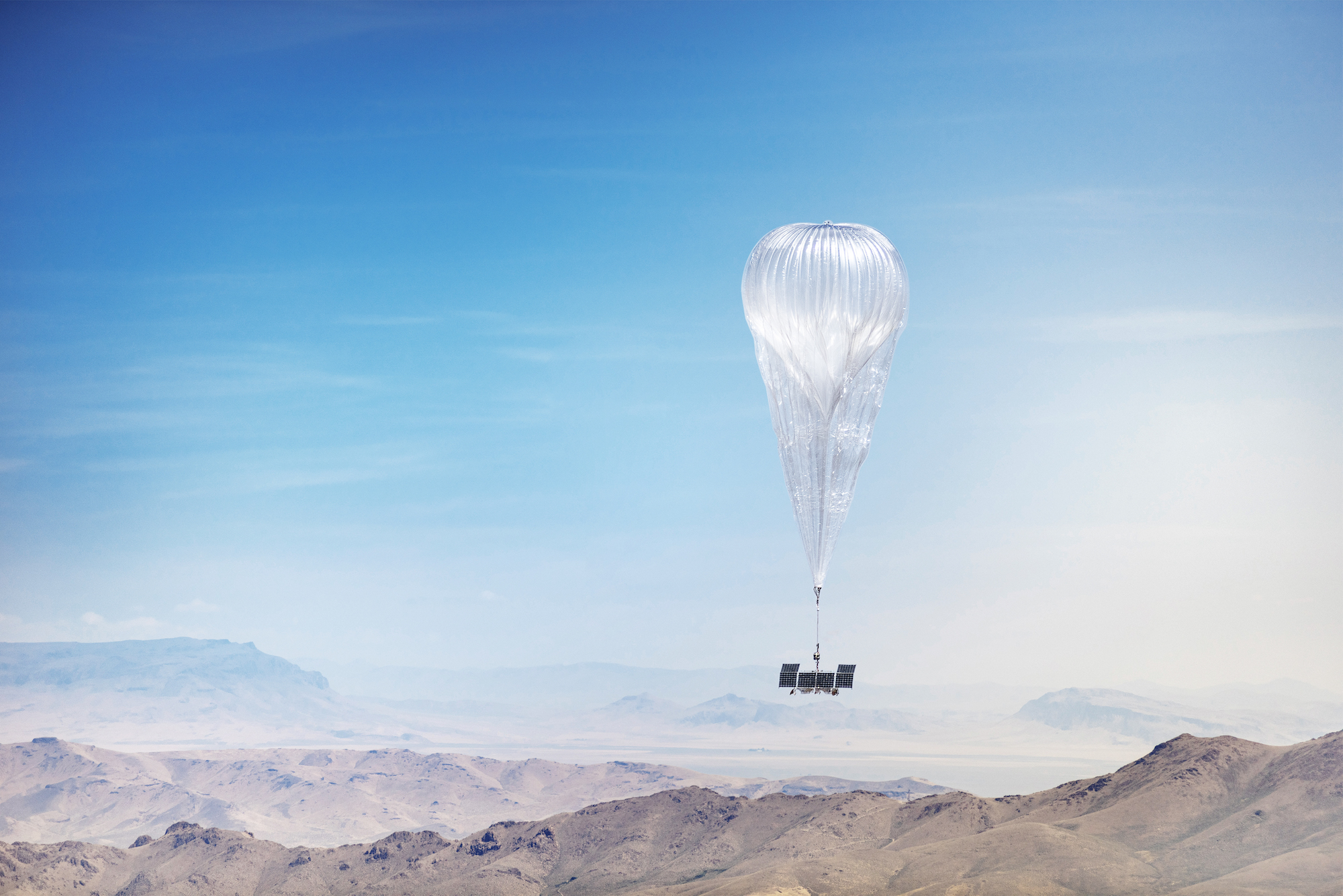

It always seemed like an idea that was cool, far-fetched, and possibly helpful: Balloons, high above the earth, sending cell signals to people down below. The giant polyethylene flying machines could transmit LTE signals to people in disaster zones or rural areas with no cell infrastructure. Alphabet, Google’s parent company, called the airborne initiative Project Loon, and on Thursday, it announced that it was shutting it down.
The reason, according to a blog item on the decision, is that “the road to commercial viability has proven much longer and riskier than hoped.”
While Loon (the name was a reference to both balloons and looney thinking) is coming to an end, it’s worth taking a look at how the system worked for posterity, because it was a legitimately fascinating aviation and connectivity initiative. The big balloons lacked engines, so they drifted on the winds. They could change their altitude to catch different air currents by either pumping air in, or out, of a smaller balloon that was inside the larger helium vessel. One balloon would get an LTE signal from the ground, and then the balloons could pass data via millimeter wave connection between each other using carefully oriented antennas. Solar power gave them the energy they needed for that, but one key problem to solve was just making sure the antennas could talk to each other.
“The primary thing is the accuracy—the power requirements aren’t too difficult in the stratosphere,” Sal Candido, the CTO at Loon, told PopSci for an explainer on how the connections work in 2018.
A balloon could broadcast the signal down to the ground below, covering about 1,930 square miles below it. Anyone grabbing the signal didn’t need to do anything special with their phone to connect to the airborne gizmo—it worked using a telecom company’s network, so if AT&T was providing the signal to a Loon balloon, and a person below the transmitting balloon was an AT&T customer, their phone would connect to the balloon-borne signal automatically, just like latching on to a cell tower.
Popular Science took a look at how the system worked in 2015, and again in 2017, when the balloons were used over Puerto Rico following Hurricane Maria.
Meanwhile, Facebook had worked on its own airborne connection system, in which unmanned aircraft would deliver internet signals to people down below. Called Aquila, the Facebook-made aircraft project came in for a final landing in 2018. However, a Facebook blog post about the decision said that it would “continue to work with partners like Airbus” and a report in 2019 said the two companies were doing just that. Today, one of the most prominent internet-from-the-heavens projects in Elon Musk’s Starlink, which consists of hundreds of satellites (so far) whose purpose is to beam down the internet.
Ultimately, there are many ways to move data: through subsea cables, cable and fiber lines, cell towers, 5G spots, Wi-Fi, and more. Balloons, drones, and satellites are just one aspect of the sector—don’t expect signals from high in the sky, or space, to replace your speedy ground-based connection anytime soon.